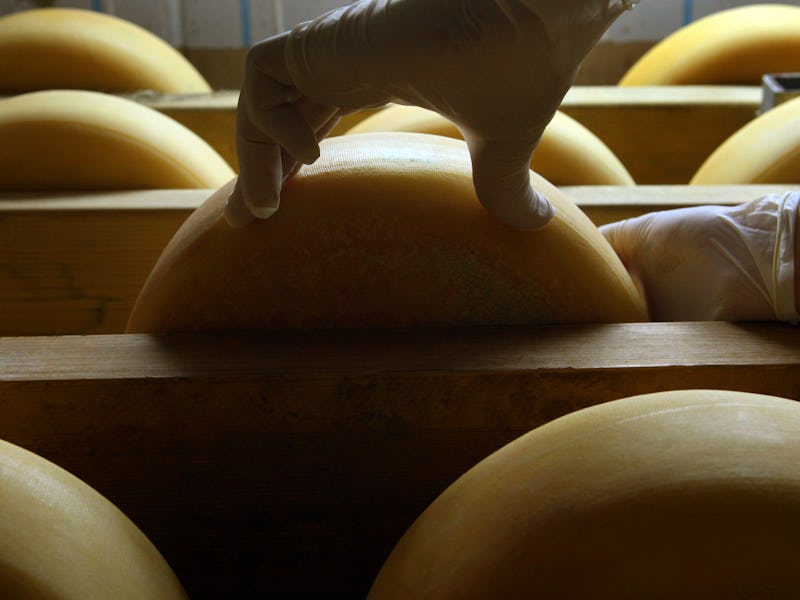New Tool Is Designed To Make The Perfect Cheese Every Time, Scientists Say
That's some (e)dam goud(a) cheese.

Cheese is serious business. It’s a nearly $100 billion global industry, but even a dairy-averse vegan like me knows you don’t measure cheese’s appeal by the money. Cheesemakers and cheese eaters alike are in it for love of the game, for the quest to find just the perfect morsel to have with their crackers or their wine. And some Norwegian researchers just did everyone a serious solid on that front.
As the team from the Norwegian University of Life Sciences in Aas write in Friday’s issue of Applied and Environmental Microbiology, they have designed a tool that can ensure cheeses like edam and gouda are manufactured with consistently excellent quality. That’s a harder task than it sounds, as these are what’s known as Dutch type cheeses, which rely on complex starter cultures of bacteria along with milk during the production process. Those microbial cultures are vulnerable to viruses known as bacteriophages.
In current production practices, cheesemakers face an unenviable choice. Either they can use traditional methods that can potentially help ward off bacteriophages but make the actual quality of the cheese inconsistent, or they can use the favored industrial process that keeps the bacteria exactly the same in each iteration, ensuring each new edam or gouda is equally good. But it’s a lot easier for the bacteriophage to evolve and wipe out microbial cultures that are held frozen across generations, making them more vulnerable.
The solution, according to the Norwegian researchers, is to use next generation gene sequencing to focus in on a particular protein called epsD. This particular gene is important for producing a sugary compound on the outside of the culture’s cells, which put it in prime position to help defend against invading bacteriophage. And if it’s not there, then that serves as an early warning system that the entire starter culture is under attack.
“The loss of abundance, or disappearance of an epsD sequence indicates that something has gone wrong,” researcher Helge Holo said in a statement. “That could be a phage attack.”
The upshot, according to the researchers, is that cheesemakers can use this genetic tool to figure out which strains matter most for cheese quality and then determine which need to be engineered to better resist bacteriophage. Or it could go the other way, with naturally virus-resistant strains engineered to help make for better-tasting cheese.
The gene epsD is highly diverse, present in various forms in almost all strains seen in Dutch type cheese’s starter cultures. The tool the researchers have designed can identify both the abundance and the diversity of epsD sequences in a particular bacterial culture.
And Holo said the diversity of the epsD sequences is a result of countless generations fending off attacks from all the different kinds of bacteriophages, making it even more perfect as a kind of genetic canary in a very cheesy coal mine.